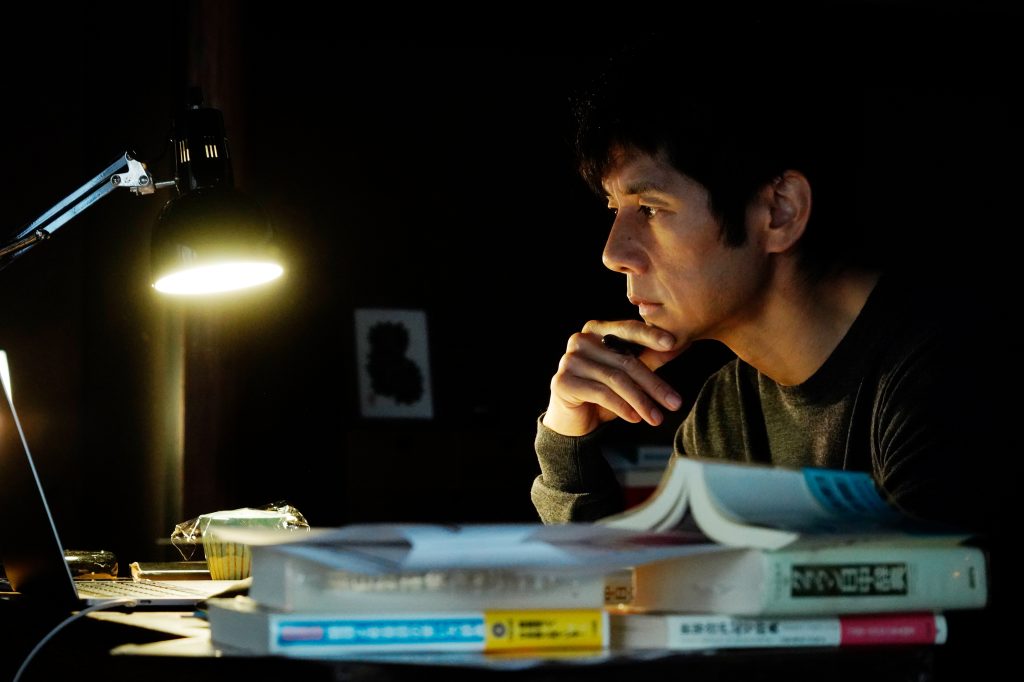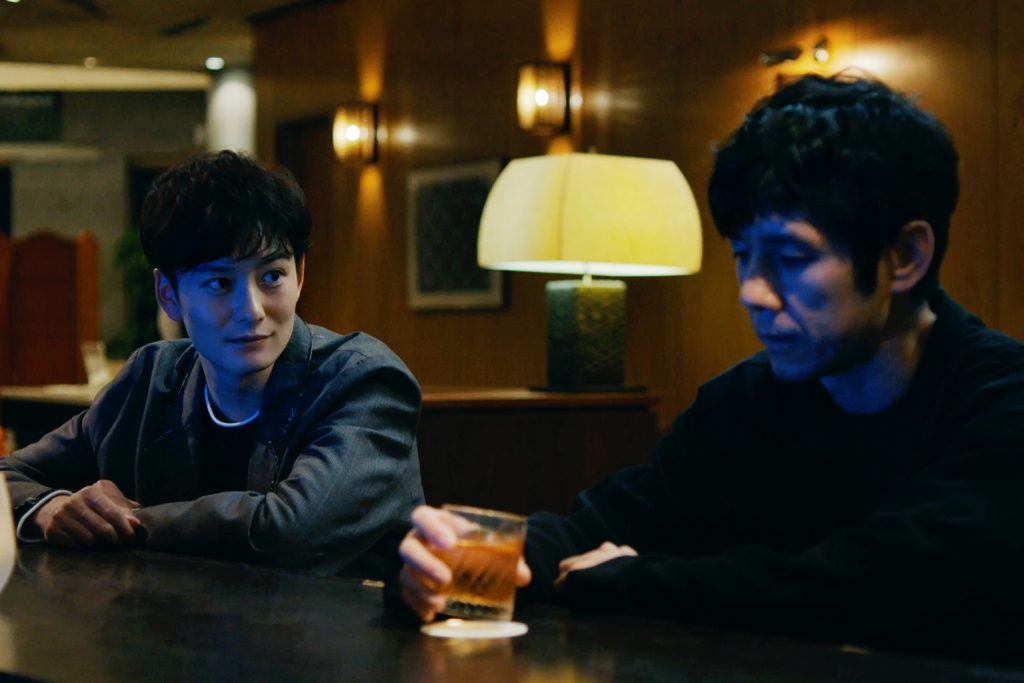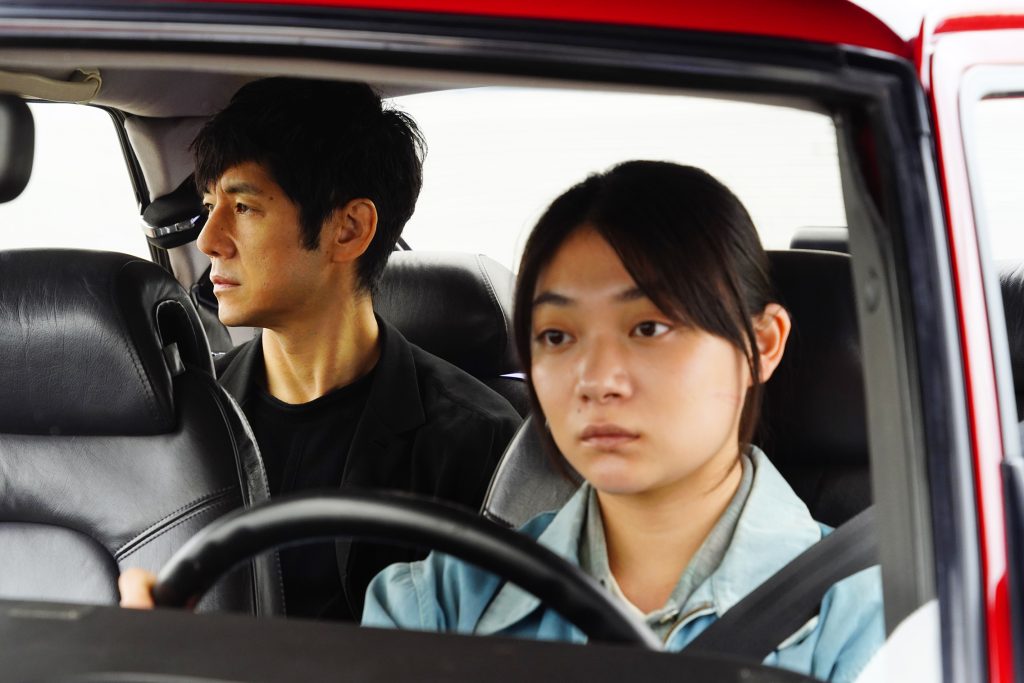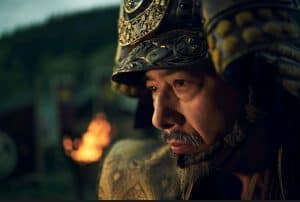What matters most when watching a movie: the journey or the destination?
You can make persuasive cases for both. After spending 90 minutes or more with a set of characters and their unique stories, you want a satisfying conclusion that resolves their arcs and allows you the freedom to move forward. Sometimes, the opportunity to immerse yourself in those characters, their worlds and their truths is enough; pay off be damned.
Drive My Car pushes those arguments to their logical extreme. The film – Japan’s official selection for the Oscars – toys deliberately with time, unspooling its narrative over two years in its time and three hours in ours. Yūsuke Kafuku (Hidetoshi Nishijima) is an accomplished theater actor married to screenwriter Oto (Reika Kirishima). Two years after she dies unexpectedly, Kafuku travels to Hiroshima to take on a director’s residency, where he’ll direct a multilingual version of Chekhov’s Uncle Vanya. The theater company assigns him a 23-year old driver named Misaki (Tōko Miura), although he prefers to drive himself. (He listens to a tape of Oto reciting lines to help him prepare for performances.) The play’s rehearsal period pushes Kafuku to confront his complicated feelings about Oto and move beyond the grief with Misaki’s quiet, unassuming help.
Director Ryusuke Hamaguchi doesn’t lay the path out right away, despite his frequent, almost ironic roadway shots. Drive My Car is more methodical and deliberate. It slowly teases the way to its ultimate goal and insight, with thematic and tonal detours along the way. The first 40 minutes – recapping Yūsuke and Oto’s final days together – feel like a prequel to the main story. (It even precludes the opening credits.) Hamaguchi renders their relationship with a frank sensuality and disarming tension that recalls Basic Instinct and Unfaithful. First impressions would dictate this film is the kind of high-minded erotic thriller that Hollywood has long since abandoned.

Drive My Car subverts those expectations by shifting gears and slowing down to contemplate grief and trauma. Hamaguchi doesn’t wholly dissipate that energy as he turns to a more meditative approach. He structures his scenes, particularly the play’s rehearsals, to lean on the unspoken tension between Yūsuke and Oto’s young actor lover Kōji Takatsuki (Masaki Okada) and presumably set up a showdown between the two men. The expectations also inform how we see Misaki and Yūsuke’s relationship and whether there’s potential for romance. That dual tension keeps you engaged and makes the film’s runtime feel less punishing than it could’ve been.
But Drive My Car isn’t a melodrama about two men fighting over a shared lover’s ghost. It also isn’t an unlikely romance between two unmoored souls. Instead, Hamaguchi uses his characters’ histories and relationships to unpack how tragedy informs output, particularly artistic. The screenplay, written by Hamaguchi and Takamasa Oe, has stunning insight into Yūsuke, Misaki, and Kōji’s internalization of their traumas and how they chipped away at them. The film’s final stretch contains some of the most emotionally affecting words spoken on film in 2021, regardless of language. The conversations sing with grace and humanity; it gives the characters’ deep-seated pain space to breathe while gently encouraging them to move beyond it.
Hamaguchi pairs the stunning screenplay with visuals of equal measure. The cinematographer Hidetoshi Shinomiya composes beautiful shots and sequences, especially when playing with light and shadows. The opening memorable shot of Oto, nude and cloaked in early-morning darkness, sets the seductive, mysterious atmosphere. The shadows overlaying Yūsuke and Kōji’s faces as they bear their souls discussing Oto reflect quiet yet palpable vulnerability. No frame or scene feels extraneous or self-indulgent, an astonishing achievement for a film like this.

The cast of Drive My Car exercises tremendous restraint with the material, delivering uniformly memorable performances. Hidetoshi Nishijima is a tight coil of repressed grief, anger, and misery, holding back just enough for us to wonder when the tension will release. When it does, he wrecks you as he pours his crumbled heart out and still finds space to offer comfort. Tōko Miura’s Misaki might be even more repressed than Yūsuke, and she conveys that with a tone and expression that is devastatingly distant and haunted. Masaki Okada lends Kōji a tangible air of power that deepens a character that might’ve been comparatively flat with another actor.
Drive My Car ultimately contends that the journey and destination matter equally. Hamaguchi values his characters’ every past and present experience as much as their future and goes to great pains to ensure equal consideration. The film is a measured and slow experience that will challenge even the most patient audiences. And yet, it’s worth the effort. The genuinely moving observations will resonate with anyone who’s lost someone and hasn’t found the path forward. It may take three hours, but Drive My Car will get you there and uncover some lovely sights along the way.
Before we let you go, we have officially launched our merch store! Check out all of our amazing apparel when you click here and type in GVN15 at checkout for a 15% discount!
Make sure to check out our podcasts each week including Geek Vibes Live, Top 10 with Tia, Wrestling Geeks Alliance and more! For major deals and money off on Amazon, make sure to use our affiliate link!
A late-stage millennial lover of most things related to pop culture. Becomes irrationally irritated by Oscar predictions that don’t come true.








